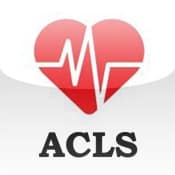
Episode 15 Part 1: Acute Coronary Syndromes Risk Stratification
In Part 1 of this Episode on Acute Coronary Syndromes Risk Stratification Dr. Eric Letovksy, Dr. Mark Mensour and Dr. Neil Fam discuss common pearls and pitfalls in assessing the patient who presents to the ED with chest pain. They review atypical presentations to look out for, what the literature says about the value of traditional and non-traditional cardiac risk factors, the diagnostic utility of recent cardiac testing, and which patients in the ED should have a cardiac work-up. Finally, in the ED work up of Acute Coronary Syndromes Risk Stratification, they highlight some valuable key points in ECG interpretation and how best to use and interpret cardiac biomarkers like troponin. Drs. Letovksy, Mensour & Fam address questions like: How useful are the traditional cardiac risk factors in predicting ACS in the ED? How does a negative recent treadmill stress test, nuclear stress test or angiogram effect the pre-test probability of ACS in the ED? What does recent evidence tell us about the assumption that patients presenting with chest pain and a presumed new LBBB will rule in for MI and require re-perfusion therapy? How can we diagnose MI in the patient with a ventricular pacemaker? What is the difference between Troponin I and Troponin T from a practical clinical perspective? Is one Troponin ever good enough to rule out MI in the patient with a normal ECG? Should we be using a 2hr delta troponin protocol? How will the new ultra-sensitive Troponins change our practice? and many more.....
Episode 14 Part 2: Thunderclap Headache – Cerebral Venous Thrombosis and Cervical Artery Dissection
emergency headacheIn Part 2 of this episode on Thunderclap Headache - Cerebral Venous Thrombosis & Cervical Artery Dissction, Dr. Stella Yiu and Dr. Anil Chopra review the presentation, work-up and management of some of the less common but very serious causes of headache including Cervical Artery Dissection (CAD), Cerebral Venous Thrombosis (CVT) and Idopathic Intracranial Hypertension (IIH). They tell us the most effective ways in which we can minimize the chance of the common Post-LP Headache. They answer questions such as: How does a carotid artery dissection present compared to a vertebral artery dissection? What is the evidence for chiropractic neck manipulation as a cause for Cervical Artery Dissection? How do antiplatelets compare to heparin for the treatment of Cervical Artery Dissection? What is Spontaneous Intracranial Hypotension? What is the differential diagnosis for headache in the peri-partum patient? Does D-dimer have a role in ruling out Cerebral Venous Thrombosis in the low risk patient? What is the imaging modality of choice for suspected Cerebral Venous Thrombosis? What is the value of opening pressure when performing an LP? What are the key headache diagnoses that can be missed on plain CT of the head and would warrant further investigation? and many more.....
Episode 14 Part 1: Migraine Headache and Subarachnoid Hemorrhage
In Part 1 of this episode on Headache Pearls & Pitfalls - Migraine Headache & Subarachnoid Hemorrhage, Dr. Anil Chopra and Dr. Stella Yiu discuss the best evidenced-based management of migraine headache in the ED including the use of dexamethasone, dopamine antagonists, the problems with narcotics and the efficacy of 'triptans'. An easy way to remember the worrisome symptoms of headache indicating a serious cause is reviewed followed by a detailed discussion of the pearls, pitfalls and controversies around the work-up of Subarachnoid Hemorrhage (SAH) in light of some exciting recent literature, including the basis for a new Canadian decision rule for SAH.
Episode 13 Part 2: Killer Coma Cases – The Intoxicated Patient
In part 2 of this episode Dr. Helman presents two more cases to Dr. Carr and Dr. Steinhart, who give us their insights into the common conundrums when it comes to the intoxicated ED patient, and some key clues to the not-so-common life threatening toxicological emergencies that we need to be on the look out for.
Episode 13 Part 1: Killer Coma Cases – The Found Down Patient
In Part 1 of Killer Coma Cases - The Found Down Pateint, Dr. Helman presents two challenging cases to Dr. Brian Steinhart and Dr. David Carr, who tell us loads of key clinical pearls in their approaches to the 'found down' patient. They discuss the important components of the neurological exam in the comatose patient, the differential diagnosis of altered mental status and hyperthermia, the controversies around when to get a CT head before performing a lumbar puncture, and much more in this Killer Coma Cases episode. In Part 1 of this episode, we discuss the limitations of plain CT, the interpretation of CSF and the many faces of seizures. Any more information would be giving away the cases.....
Episode 12 Part 2: ACLS Guidelines – Atropine, Adenosine & Therapeutic Hypothermia
In Part 2 of this episode on ACLS Guidelines - Atropine, Adenosine & Therapeutic Hypothermia, Dr. Steven Brooks and Dr. Michael Feldman discuss the removal of Atropine from the PEA/Asystole algorithm, the indications and dangers of Adenosine in wide-complex tachycardias, pressors as a bridge to transvenous pacing in unstable bradycardias, and the key elements of post cardiac arrest care including therapeutic hypothermia and PCI. They answer questions such as: In which arrhythmias can Amiodarone cause more harm than good? Is there any role for transcutaneous pacing for asystole? When should Bicarb be given in the arrest situation? In what situations is Atropine contra-indicated or the dosage need to be adjusted? How has the widespread use of therapeutic hypothermia currently effected our ability to prognosticate post-arrest patients? What are the indications for PCI and thrombolysis in the cardiac arrest patient? Should we be using therapeutic hypothermia in the non-Vfib arrest patient? What is the best method for achieving the target temperature for the patient undergoing therapeutic hypothermia? and many more......





